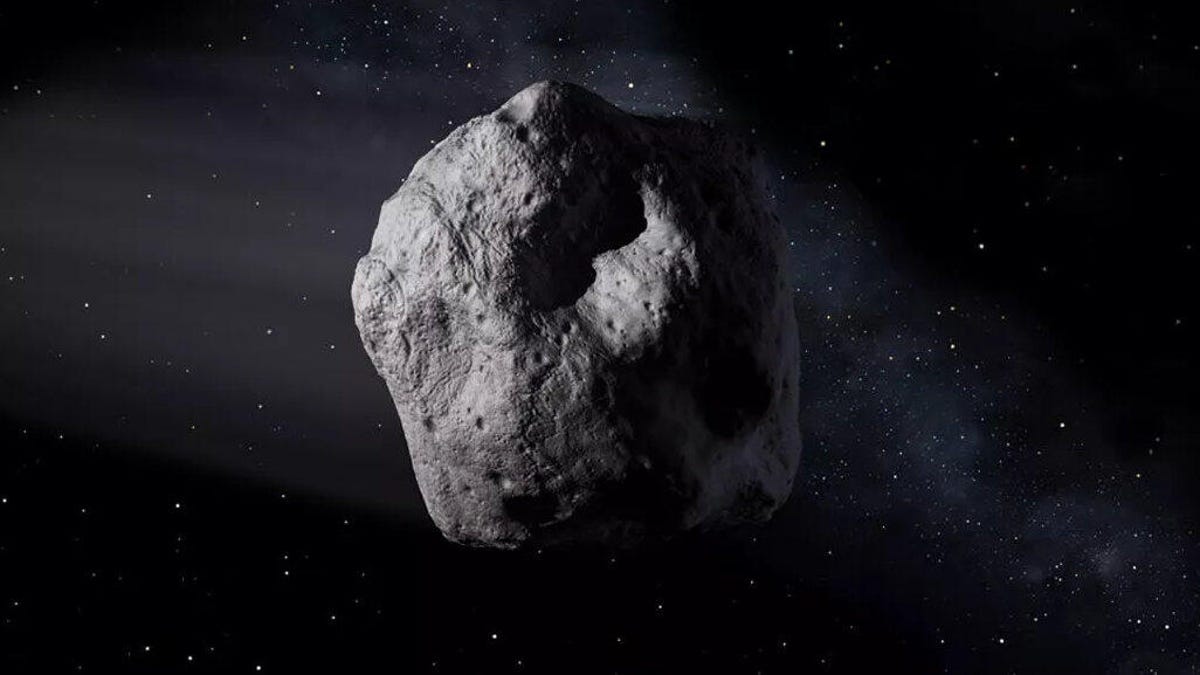Scientists can't rule out giant asteroid Apophis impacting Earth in 2068
Apophis is the size of the Eiffel Tower and a 2068 impact scenario is still in play, but it's not a reason to lose sleep.

A general representation of what an asteroid looks like.
In a year of so much catastrophe and stress, it's no wonder so many people have been fixating on asteroids and whether they might strike Earth. That worry is projecting into the future as we look at welcoming massive asteroid Apophis to our neighborhood.
Apophis is set to make a series of visits over the coming decades, but the one that's led to some breathless headlines at the moment is an anticipated close approach in 2068. The asteroid is estimated to be over 1,000 feet (300 meters) in size. That's like having the Eiffel Tower fly through space.
Researchers at the University of Hawaii Institute for Astronomy (IfA) announced the detection of a phenomenon called Yarkovsky acceleration on the asteroid. "This acceleration arises from an extremely weak force on an object due to non-uniform thermal radiation," the university said in a statement in late October. This is essentially a slight nudge due to the effects of sunlight, but it can change an asteroid's path over time.
Previously, scientists didn't think a 2068 impact scenario with Earth could happen. The new observations "show that the asteroid is drifting away from a purely gravitational orbit by about 170 meters per year, which is enough to keep the 2068 impact scenario in play," said IfA astronomer Dave Tholen.
Apophis was first spotted in 2004 and scientists have been revising what we know about its path as more data is collected. In 2013, researchers determined it wouldn't smack us in 2036.
A 2029 impact was also previously ruled out. Apophis will come in close on Friday, April 13, 2029 and should be visible from Earth with the naked eye. That visit should help astronomers dial in the asteroid's future trajectory.
In the meantime, scientists are working on ways to deal with potentially dangerous asteroids. NASA's DART mission, for example, will demonstrate a method that involves crashing a spacecraft into an asteroid's moon in order to nudge it. If that works, the concept could be used to push threatening asteroids onto safer paths.
The uncertainty about Apophis is a little unsettling, but you shouldn't pencil in the end times on your calendar just yet. "Astronomers will know well before 2068 if there is any chance of an impact," said the University of Hawaii. Sit tight. Scientists are keeping a close eye on it.

